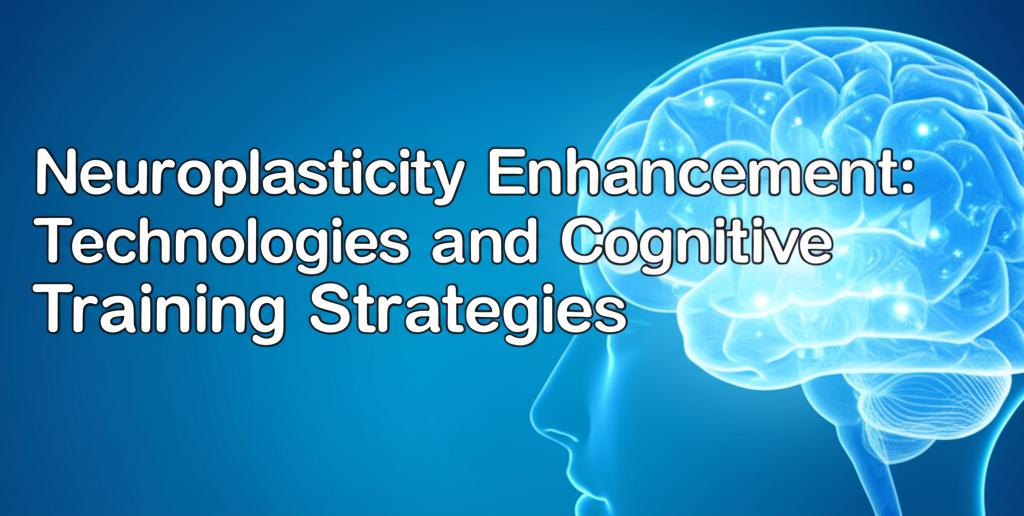Our brains are remarkable organs, constantly adapting and reorganizing themselves throughout our lives. This ability, known as neuroplasticity, is fundamental to learning, memory, and recovery from injury. Excitingly, we now understand more than ever about how to actively enhance this process through targeted strategies and innovative technologies.
Harnessing the Mind: Cognitive Training StrategiesThe most accessible way to boost neuroplasticity involves actively engaging our minds and bodies:
- Embrace Novelty and Complexity: Learning new skills is a powerful driver of brain change. Activities that are challenging and unfamiliar, such as learning a musical instrument, mastering a new language, coding, or engaging in complex strategy games, force your brain to build new neural pathways and strengthen existing ones. The key is consistent practice and pushing slightly beyond your current comfort zone.
- Mindfulness and Meditation: Practices like mindfulness meditation involve focusing attention and cultivating present-moment awareness. Research shows this can lead to structural and functional brain changes, enhancing areas related to attention, emotional regulation, and self-awareness. By reducing stress, which can hinder plasticity, meditation creates a more fertile ground for positive brain changes.
- Physical Exercise: Movement is medicine for the brain. Aerobic exercise, in particular (like running, swimming, or brisk walking), significantly boosts neuroplasticity. It increases blood flow to the brain, reduces inflammation, and stimulates the release of crucial growth factors like Brain-Derived Neurotrophic Factor (BDNF), which acts like fertilizer for neurons, promoting their growth and survival.
- Targeted Cognitive Training: Engaging in activities specifically designed to challenge cognitive functions like memory, attention, processing speed, and problem-solving can stimulate plasticity. This includes traditional methods like puzzles and crosswords, as well as specialized digital brain training programs and apps. While the extent to which skills learned in games transfer to real-world tasks is debated, targeted training can strengthen specific cognitive circuits.
- Rich Social Interaction: Engaging in meaningful conversations, collaborative activities, and maintaining strong social bonds also stimulates cognitive processes and contributes to brain health, supporting overall plasticity.
Technology offers increasingly sophisticated ways to interact directly with brain activity to promote plasticity:
- Neurofeedback: Visualize your brainwaves in real-time! Neurofeedback systems provide users with feedback about their brain activity, often through visual or auditory cues. This allows individuals to learn, consciously or unconsciously, to regulate specific brain patterns associated with focus, relaxation, or cognitive performance, thereby guiding plastic changes.
- Non-Invasive Brain Stimulation:
Transcranial Magnetic Stimulation (TMS): Uses focused magnetic pulses applied to the scalp to stimulate or inhibit activity in specific brain regions non-invasively. TMS is FDA-approved for depression and OCD, and research is exploring its potential for enhancing cognitive functions, motor learning, and stroke recovery by directly modulating neural circuits.
Transcranial Direct Current Stimulation (tDCS): Applies a weak, constant electrical current through electrodes placed on the scalp. This current can subtly alter neuronal excitability, making neurons more or less likely to fire. tDCS is being investigated as a tool to enhance learning, memory, attention, and rehabilitation outcomes by priming the brain for plastic changes during training or therapy.
- Virtual Reality (VR): Immersive VR environments provide highly engaging and controlled settings for cognitive and motor training. VR can simulate complex real-world scenarios safely, offering rich sensory feedback and personalized challenges ideal for driving neuroplasticity in rehabilitation (e.g., after stroke) and skill acquisition.
- Wearables and Mobile Apps: A growing ecosystem of wearable sensors and apps helps individuals track physiological data relevant to brain health (sleep quality, heart rate variability, stress levels) and provides platforms for guided meditation, cognitive exercises, and even basic neurofeedback, making neuroplasticity enhancement more accessible.
Enhancing neuroplasticity is not about a single magic bullet, but rather integrating various approaches. Combining lifestyle strategies like exercise and lifelong learning with targeted cognitive training or potentially technology-assisted methods offers the most promising path. The journey to a more adaptable, resilient brain is continuous, requiring consistent effort and a willingness to challenge yourself. By leveraging these diverse strategies and technologies, we can actively shape our brains for better learning, performance, and well-being throughout life.

